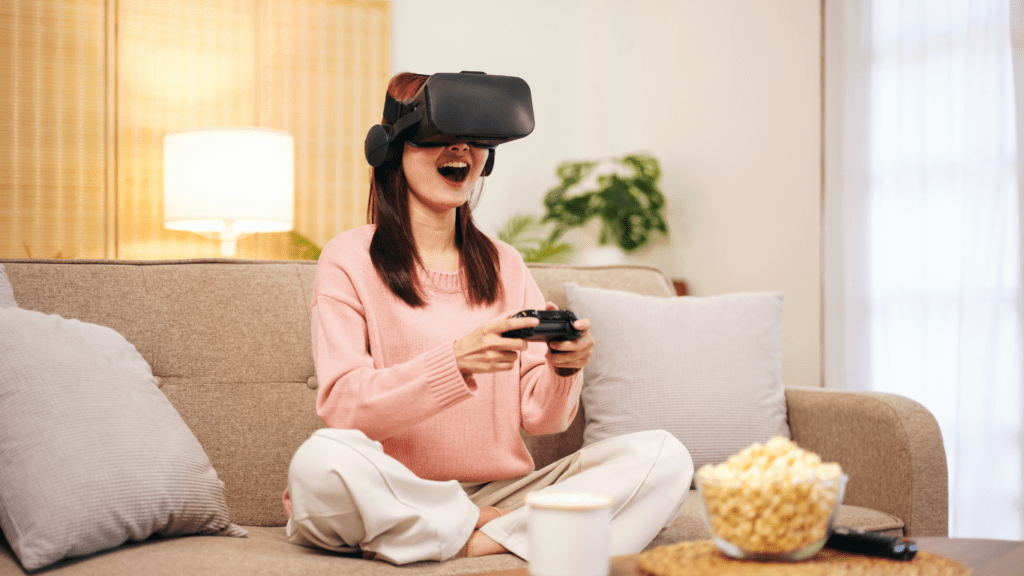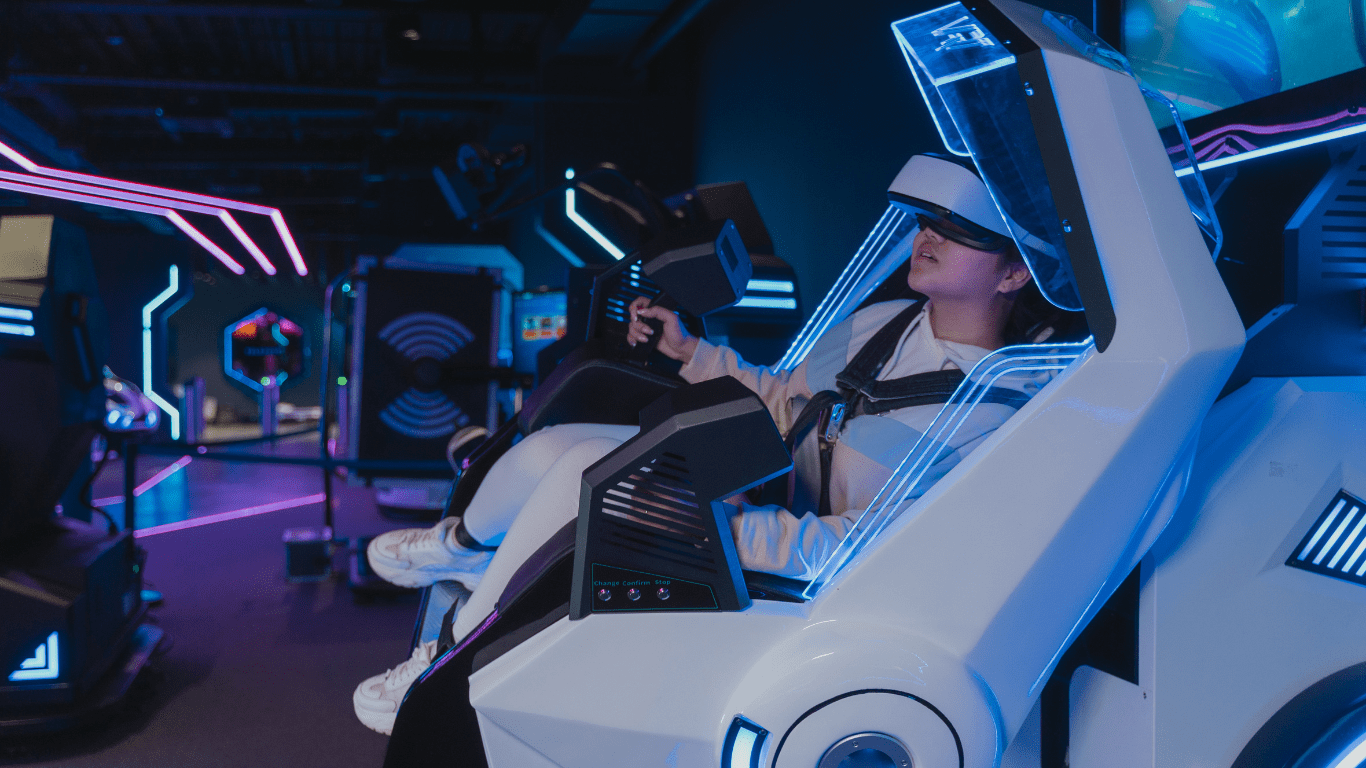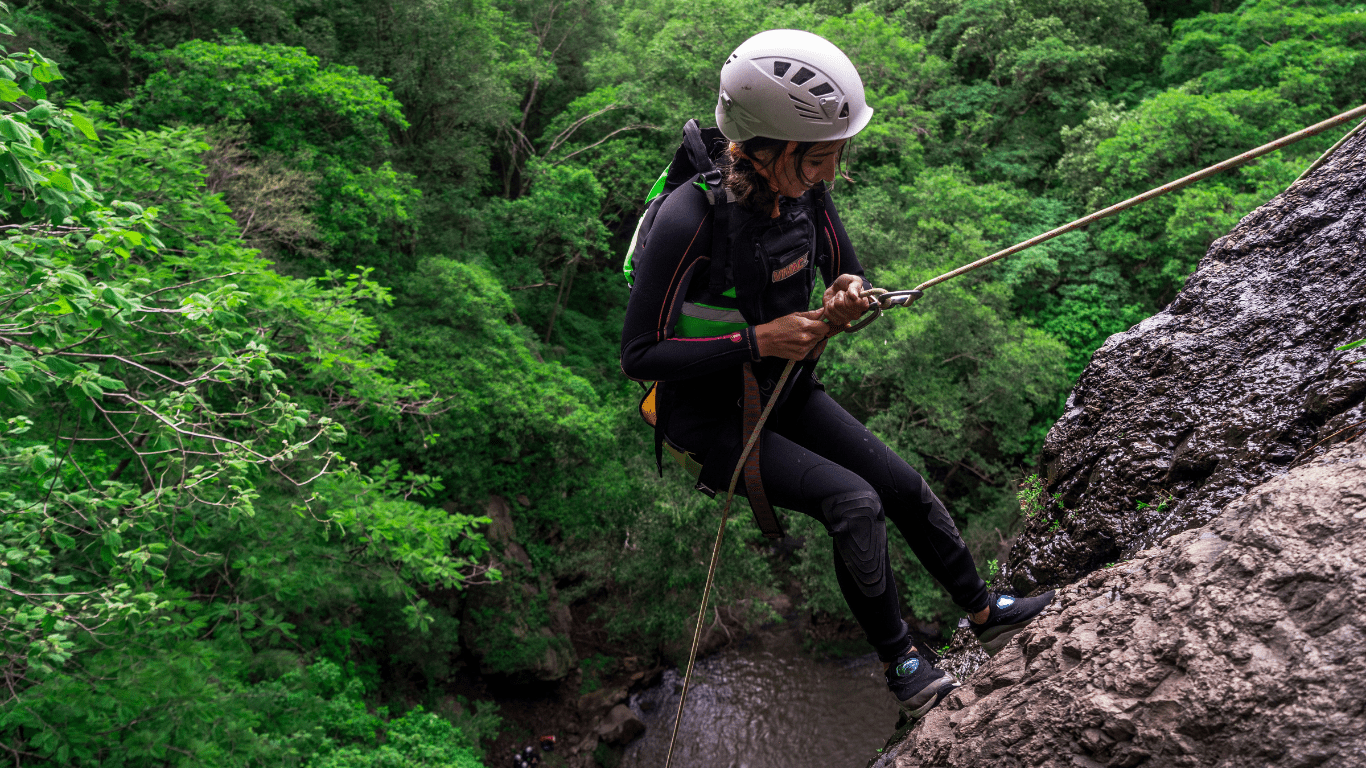Embracing a New Era: Virtual Reality in Sports
The Rise of Virtual Reality Training
Exploring the rise of Virtual Reality (VR) training in the realm of sports unveils a paradigm shift in how athletes prepare for competitions.
With VR technology, athletes can immerse themselves in a simulated environment that replicates real-world scenarios, enabling them to sharpen their skills in a virtual setting.
This innovative approach marks a significant departure from traditional training methods, propelling athletes into a futuristic realm where visualization and practical application converge seamlessly.
Transformative Benefits for Athletes
Delving into the transformative benefits of VR training for athletes reveals a game-changing approach to skill development and performance enhancement.
By utilizing VR simulations, athletes can improve their:
- cognitive abilities
- enhance decision-making skills
- fine-tune their muscle memory with unparalleled precision
This cutting-edge technology not only refines athletic prowess but also accelerates the learning curve, offering athletes a competitive edge in mastering complex techniques and strategizing for success on the field.
Advancements in Technology: Building the Virtual Training Ground
The Hardware: VR Headsets and Equipment
Exploring the hardware aspect of Virtual Reality (VR) sports training, I delve into the essential tools that pave the way for immersive experiences.
VR headsets and equipment play a pivotal role in creating a realistic virtual environment for athletes.
These devices transport me to a digital realm where I can practice and refine my skills with precision.
The high-definition displays, ergonomic design, and motion-tracking sensors of VR headsets immerse me in a 360-degree view of the training ground, allowing me to visualize plays and execute movements as if I were on the actual field.
The Software: Simulation Programs and Analytics
In the realm of Virtual Reality (VR) sports training, the software component is equally vital. Simulation programs and analytics form the backbone of creating dynamic and interactive training modules for athletes.
These sophisticated programs analyze my performance metrics, track progress, and provide real-time feedback to enhance my skills.
By simulating game scenarios and incorporating advanced analytics, I can refine my tactics, improve decision-making under pressure, and adapt to varying situations seamlessly.
Through the synergy of cutting-edge hardware like VR headsets and immersive software solutions, athletes are empowered to elevate their training regimen to unprecedented levels.
Virtual Reality training bridges the gap between visualization and practical application, revolutionizing the way sports professionals prepare for competitions and enhancing their overall performance on the field.
Case Studies: Virtual Reality Success Stories in Sports
Elite Teams and Athletes Who Use VR
In the realm of sports, the utilization of Virtual Reality (VR) technology has become increasingly prevalent among elite teams and athletes.
Top-tier sports organizations, such as professional football clubs and Olympic teams, have integrated VR into their training regimens to gain a competitive edge.
As an athlete, I’ve witnessed firsthand how VR applications have revolutionized the way players prepare for matches.
By simulating game scenarios and fine-tuning techniques in a virtual environment, athletes can sharpen their skills with a level of precision that was previously unattainable.
Measurable Improvements and Performance Gains
The adoption of VR in sports training has yielded tangible results in terms of performance improvements and skill development.
Athletes who incorporate VR simulations into their practice routines experience enhanced cognitive processing, faster decision-making abilities, and improved spatial awareness on the field.
Through my interactions with VR training programs, I’ve noticed a significant boost in my reaction times and strategic thinking during gameplay.
The measurable gains achieved through VR technology underscore its effectiveness as a valuable tool for sports preparation, aligning with my belief in its transformative impact on athletic performance.
Overcoming Challenges in Virtual Reality Sports Training
Addressing the Skepticism
In the realm of sports training, skepticism towards adopting new methodologies is not uncommon.
However, in the case of Virtual Reality (VR) sports training, overcoming skepticism is vital for realizing its full potential.
As I delve into the transformative impact of VR training, it becomes evident that addressing skepticism involves showcasing concrete examples of success stories.
By presenting data-backed results of improved performance, cognitive abilities, and decision-making skills in athletes who have embraced VR training, skeptics can be convinced of its efficacy.
Tackling Technological and Financial Barriers
While the benefits of VR sports training are evident, the road to widespread adoption faces technological and financial barriers that need to be tackled head-on.
From the technological perspective, ensuring compatibility, accessibility, and ease of use of VR equipment is crucial for seamless integration into sports training programs.
As I navigate through the challenges posed by VR technology, finding ways to make the technology more user-friendly and scalable can pave the way for overcoming these obstacles.
On the financial front, the cost associated with implementing VR sports training can be a deterrent for many organizations and athletes.
However, by exploring cost-effective solutions, such as shared training facilities or leveraging partnerships with VR technology providers, the financial barriers can be lessened.
I’ll discuss strategies to maximize the return on investment in VR sports training, making it a viable option for organizations of varying budget constraints.
Integrating VR Training with Traditional Methods
1. Finding the Balance: VR and Physical Training
In my experience, integrating Virtual Reality (VR) training with traditional physical methods is crucial for optimizing athletes’ performance.
It’s not about replacing one with the other but finding the right balance.
Combining VR simulations with physical drills allows athletes to hone both their mental and physical skills simultaneously.
By incorporating VR into training routines, athletes can enhance their cognitive abilities while maintaining their physical fitness levels.
2. The Coaches’ Perspective: Adapting to VR Training Methods
From a coach’s standpoint, adapting to VR training methods is about embracing innovation while staying true to proven training techniques.
I’ve found that coaches need to understand how to leverage VR technology to complement traditional coaching strategies effectively.
By incorporating VR simulations into practice sessions, coaches can create engaging and immersive training experiences for their athletes.
This adaptation ensures that athletes receive well-rounded training that encompasses both traditional and cutting-edge methods.
Future Prospects: What’s Next for VR in Sports Training?

1. Potential Developments and Future Innovations
Looking ahead, the future of Virtual Reality (VR) in sports training holds exciting potentials for further innovations.
As technology continues to advance rapidly, we can expect enhanced VR simulations that accurately replicate real-game scenarios with increased detail and precision.
These developments will offer athletes an even more immersive training experience, allowing them to hone their skills in environments that closely resemble competitive settings.
These enhanced VR environments may include realistic crowd noises, varying weather conditions, and dynamic opponents, providing athletes with a comprehensive training platform that challenges them in diverse ways.
Moreover, future innovations in VR sports training could incorporate biometric feedback and advanced analytics to provide athletes with real-time performance data during training sessions.
By integrating wearable technology and sensors into VR equipment, coaches and athletes can track physiological responses, monitor movement patterns, and analyze performance metrics instantaneously.
This data-driven approach to training not only enhances the effectiveness of skill development but also enables personalized training regimens tailored to individual athlete’s needs based on objective performance data.
2. Anticipating Changes in Sports Training Regimens
As we look towards the future, it’s evident that the integration of Virtual Reality (VR) into sports training regimens will lead to significant changes in the way athletes prepare for competition.
Coaches and sports organizations will need to embrace and adapt to the evolving landscape of sports training, incorporating VR technology seamlessly into existing training programs.
By blending traditional physical drills with VR simulations, coaches can offer athletes a holistic training experience that addresses both the physical and cognitive aspects of performance improvement.
The future of sports training will likely see a shift towards more personalized and adaptive training regimens, with VR playing a crucial role in individualized skill development.
Athletes will have the opportunity to engage in targeted training sessions that focus on specific skills or scenarios, allowing for efficient and effective skill enhancement.
Coaches will leverage VR technology to create customized training modules that cater to each athlete’s unique strengths and weaknesses, optimizing their overall performance on the field or court.
The future prospects of VR in sports training are promising, with continued advancements and innovations set to revolutionize the way athletes prepare for competition.
By embracing change and integrating VR technology into sports training regimens, athletes and coaches can unlock new opportunities for skill development, performance improvement, and competitive success in the fast-evolving world of sports.



